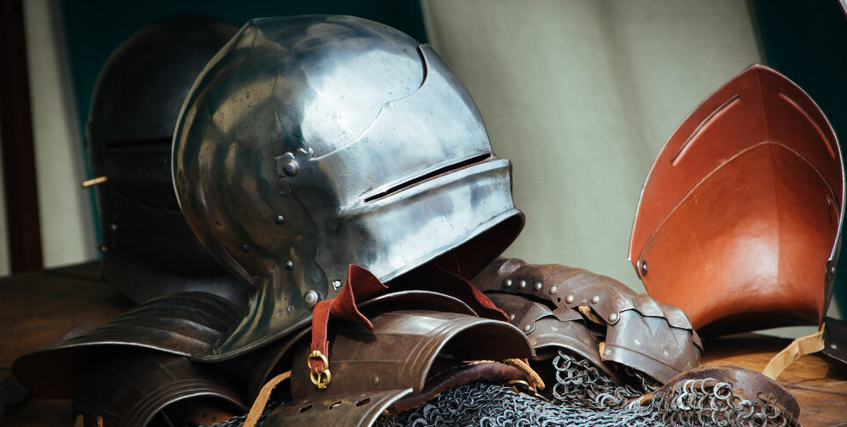Phone : +49 2233 71 39 084
E-Mail : [email protected]
History of Recycling

Ancient ages
Who would have thought? The history of recycling begins in ancient times. Even then, metal and glass were collected, melted and reworked, as archaeologists have proven.
Antiquity = strong recycling community
Thus, under the influence of the ancient Greeks who came to Egypt with Alexander the Great, and later the ancient Romans, metals and glass were collected, melted and reworked by the ancient Egyptians. Even then, scrap metal collectors wandered the streets of ancient cities, collecting discarded metal. The fact that archaeologists have found almost no metal or glass in the old houses is proof that scrap metal and glass are recycled. According to Ladstätter, everything that could be used was cashed out and not left around at home.
And these finds also bear witness to recycling in ancient times: in ancient forges, only the toes and/or heads of metal statues were often found. Archaeologists at least assume that the rest of the metal was reworked. Ladstätter tells the newspaper: "There are finds of hoardings, especially in late antiquity, where ancient materials were collected." Accordingly, finds such as coins, jewellery, as well as tools were discovered here, resulting in a mix similar to that in problematic material collection points today.
It is known from ancient Rome that thousands of bronze and copper statues (here it says 4,000 in total) were not only destroyed but also melted and reused by Christians. It is also reported that after the end of the Roman Empire, tomb thieves searched tombs for recyclable materials such as glass or metal. The grave robbery was so great that “between 500 and 900 AD, metal ore mining declined sharply. On the Greek island of Rhodes, there was once the 'Sculpture of Rhodes', a bronze statue of 30 to 40 meters high, one of the seven wonders of the ancient world. He allegedly crossed the port entrance with both feet. Overturned in the earthquake. In 672, parts of the colossal statue were sold to Jewish metal traders by the Arabs who had conquered the island,” writes Ökoleo.
Recycling hides resource usage history
But while the presence of recycled materials brings new insights into the history of recycling, this type of recycling also blurs the history of ancient societies: At least, the age of some materials may be more difficult to determine if they are recyclable, according to archaeologist Ladstätter. After all, recycling materials have been mixed for centuries.
Frequent: Disposal of ceramics (construction materials)
Which brings us to another point: besides decaying materials and recycled valuables, archaeologists also find ceramics, a material that is neither decomposed nor recycled. According to Sabine Ladstätter, even the destruction of ceramics in ancient times was problematic: In the ancient metropolis of Turkey, Ephesus, the archaeologist and his team found a real dump: "After a massive destruction, the broken pieces were taken outside the city," he tells them of their existence.
Ladstätter also reports surprising things about the disposal of ceramic debris from earthquakes in large households: Here's how things work there, according to Ladtsätter in an interview with Urbanmining.at: there's a lot of rubble due to live earthquake activity. There are times when the city government is so well organized that they carry the rubble out of the city and into the suburbs. For example, in Ephesus, there is a huge pile of rubble nine meters high. However, at times when forms of urban organization were in crisis, people dealt with them quite differently: they flattened the garbage. Or you sacrificed a room at home that you could do without. The doors were then sealed with mortar and rubble poured from above until the room was full.
Rare: recycled ceramics
Even if the only material that was dumped in the bulk was ceramics, there is also evidence of reuse: "If a vessel was broken, new objects would be made from individual pieces, such as weights for looms. A lot of shards remained - which is why we archaeologists," says Ladstätter. we make a living from ceramics because ceramics are not completely recycled," he says in the same interview.
Because the origin of the pottery can be easily determined using petrographic and chemical analysis, the analyzes reveal whether local sources were used or the material was imported. Speaking of material imports: Even in Ancient Rome, imports of luxury goods from all over the world were criticized. Instead, critics advocated a return to local/regional goods and services. Ladstätter says: "Environmental considerations have always played an important role. Especially when it comes to philosophical considerations about where people are headed and what values they should embody." According to him, the direction of decadence has been the subject of great debate, while rural, farming life was idealized by the ancient Romans.
